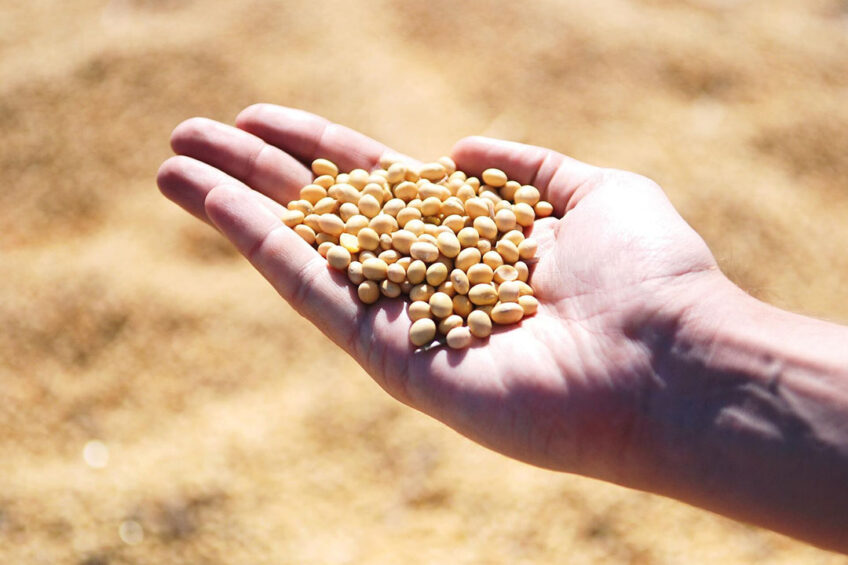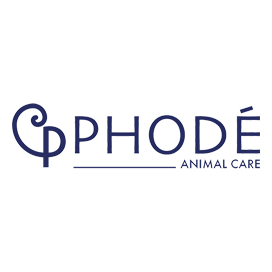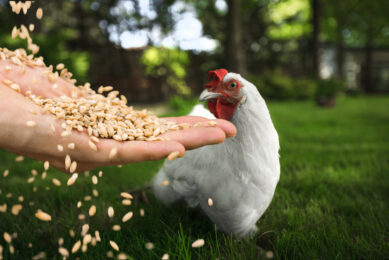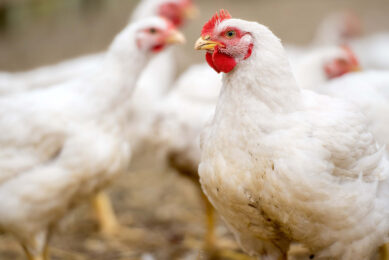Protein efficiency: Key to environmentally sustainable production

For several months, the shortage in the supply of certain materials, the increasing price of energy and the Russia-Ukraine war more recently has pushed animal producers as well as the stockbreeders to reconsider their production costs.
Feed costs represent more than half of the production cost of animal products. It is even more important in the current context of raw material prices to reformulate feeds and adapt rations to maintain a satisfactory margin on feed costs. The key word here is feed efficiency. On the one hand for profitability, on the other hand for the environment, both remain some of the major challenges for livestock farming in the future.
Feeding strategies
Different feeding strategies exist to increase feed efficiency and reduce resource waste. It makes sense to provide the right amount of nutrients – energy, protein, amino acids, minerals, trace elements and vitamins – at the right time when the animal needs them for maintenance and production. This precision feeding requires sequencing production cycles into phases for which a dedicated feed is needed. However, there are 2 main barriers in the development of precision feeding. The first is the management of animals in homogeneous batches throughout their life, which requires dedicated management to each pen and maybe specific infrastructures (e.g. automatic concentrate dispenser, sorting gate, electronic identification of animals, etc.). The second is the multiplicity of feeds, which can generate storage and logistics costs.
An alternative strategy to address both concerns – economic and environmental – is to reduce the nutritional specifications of feeds. This raises the question of maintaining the performance of farm animals. It has been shown that with less, metabolisms can even be more efficient. This is particularly true for the use of proteins in dairy cows.
Focus on protein efficiency in dairy cows
A dairy cow producing 35 kg of milk per day needs approximately 4 kg of crude protein per day. The protein efficiency of dairy cows varies between 25 and 35%. Improving the dietary crude protein utilisation in dairy cows is a key aspect of agronomical, economically and environmentally sustainable production systems.
Protein efficiency can be calculated in various ways. For example, crude protein utilisation efficiency is the ratio of the amount of protein exported in milk to the amount of crude protein consumed per day. This ratio can be as low as 13% in grazing cows when the grass in spring and fall is particularly rich in rumen degradable protein. The excess of protein intake over requirements results in the excretion of between 70 and 90% of nitrogen in the urine. This results in elevated nitrate levels in the soil and groundwater.
As excess ammonia is harmful to health, excess dietary protein is converted into urea, which is transported from plasma to saliva, urine, or milk. Milk Urea Nitrogen is considered a non-invasive and easily measurable biomarker for estimating protein utilisation efficiency and predicting urinary nitrogen release to the environment.
Reducing soybean meal use
The reference protein material, soybean meal, suffers from supply problems for specific qualities (<0.9% GMO, traced chain guaranteed without deforestation) and from extreme price volatility. Substitutions towards rapeseed meal or sunflower meal are then necessary. Apart from the high cost in the coming months, the reduction of its use in formulation presents qualitative advantages such as a GMO-free guarantee and ecological advantages such as the reduction of trans-Atlantic maritime freight and deforestation.
Sensory additives (SA) formulated with certain plant extracts are known to improve feed efficiency and allow to serenely consider the reduction of feed specifications and rations while maintaining production levels. The combination of oregano essential oil with other essential oils and plant actives reduces ruminal fermentation of feed proteins and stimulates microbial protein production, thus increasing the pool of metabolisable proteins. The productivity gains observed in the field can be translated into matrix values to formulate feeds and rations with a lower protein content.
Oleobiotec Ruminant was tested in a nutritional challenge to reduce soybean meal (SBM) by 45% in the total mixed ration of dairy cows. The High SBM diet was formulated to meet the net energy for lactation (NEL) and metabolisable protein (MP) requirements of a 650 kg body weight cow producing 40 kg milk/day with 36 g/kg milk fat and 30 g/kg milk true protein at the beginning of the experiment. The Low SBM diet was formulated to only meet NEL. The experiment was designed as a Latin square (14 cows) with 14 days of adaptation and 14 days of observation. Different parameters have been observed to assess the feed efficiency and crude protein (CP) utilisation efficiency (Table 1), and to evaluate the nitrogen discharge in the environment (Table 2).
Environmentally friendly
The addition of a few grams of a mixture of characterised and standardised plant extracts to a 15% crude protein ration improved protein efficiency by 2.7 points. Nitrogen discharge in the form of urea in urine was reduced by 31% per day. Finally, milk production per kilo of dry matter ingested was improved by 3.8%.
Maintaining the same level of efficiency with lower nutritional inputs is feasible with adapted feed formulation, with notably compounds to improve the utilisation of the feed. The profitability of animal production can be improved even in a context of rising prices and changing raw materials, while being environmentally friendly.






